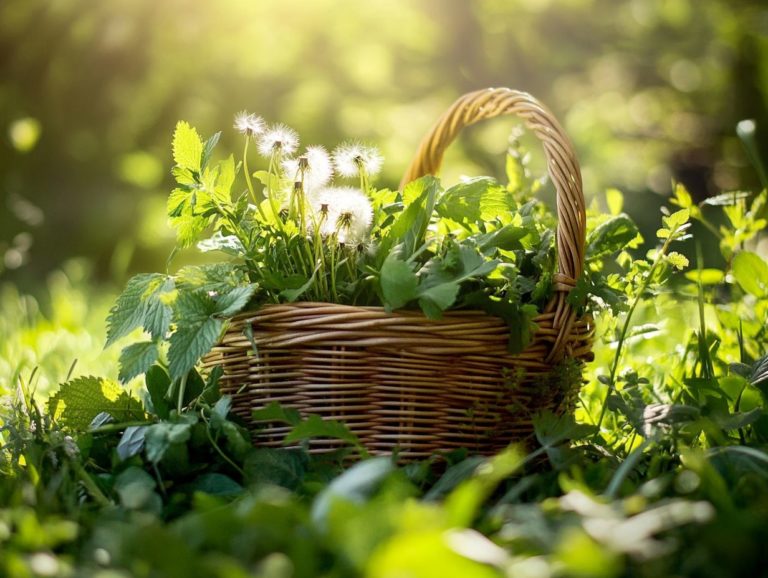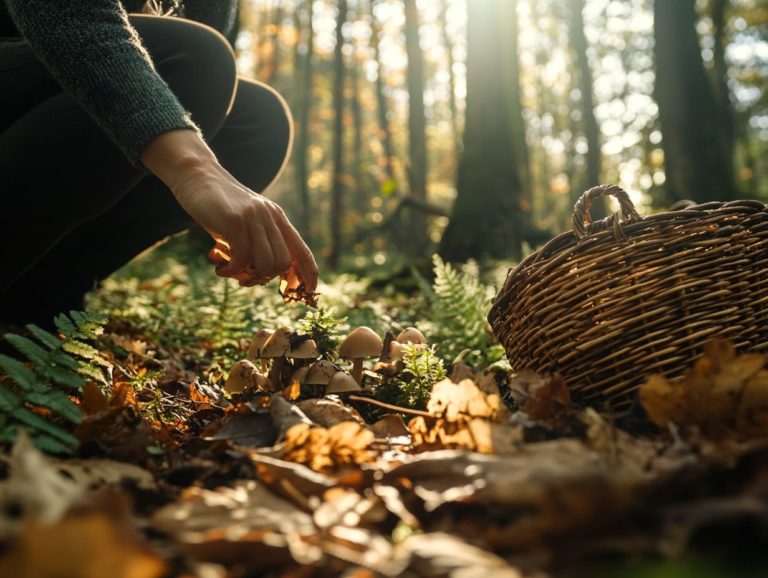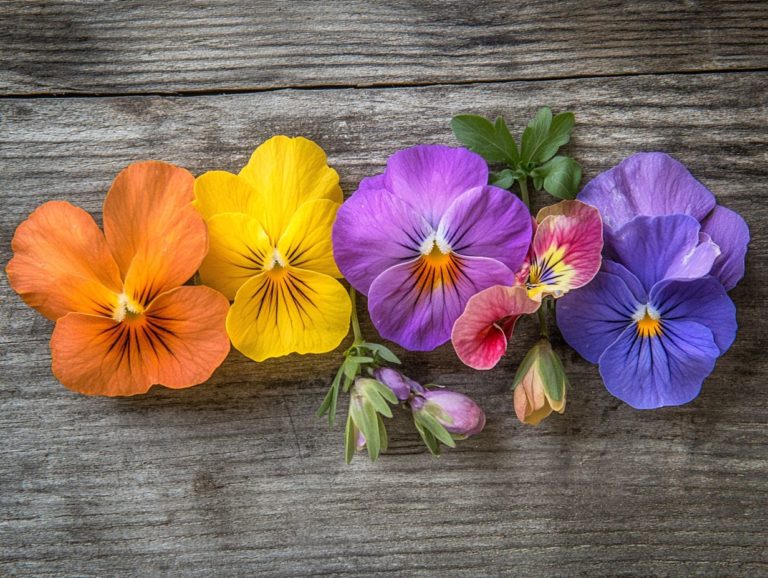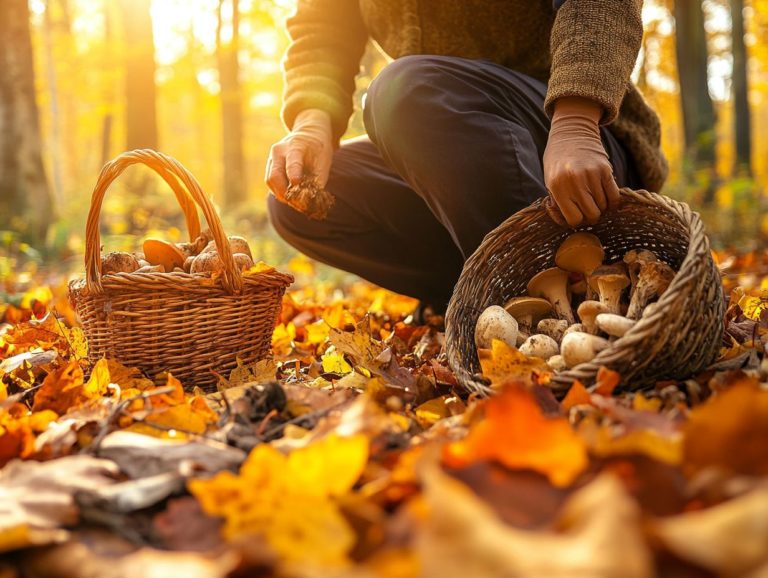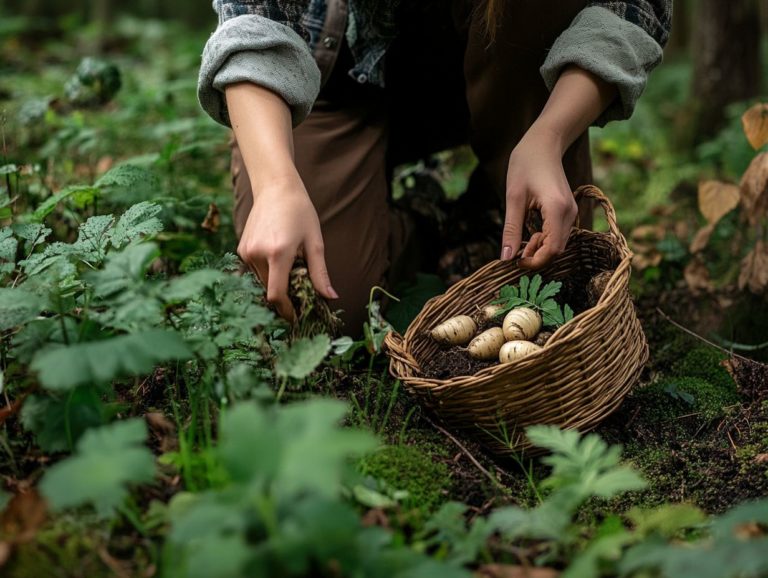Seasonal Foraging: The Best Techniques for Each Season
Seasonal foraging presents a remarkable opportunity for you to connect with nature and uncover the edible treasures that each season bestows.
This guide equips you with essential techniques for identifying and harvesting foods across spring, summer, fall, and winter. From gathering vibrant wild greens as winter melts into spring to maximizing summer s harvest and preserving autumn’s bounty for the chillier months, each section brims with practical tips and insights tailored for your success.
This guide will empower you to thrive year-round, enhancing both your meals and your appreciation for the natural world around you.
Contents
Key Takeaways:
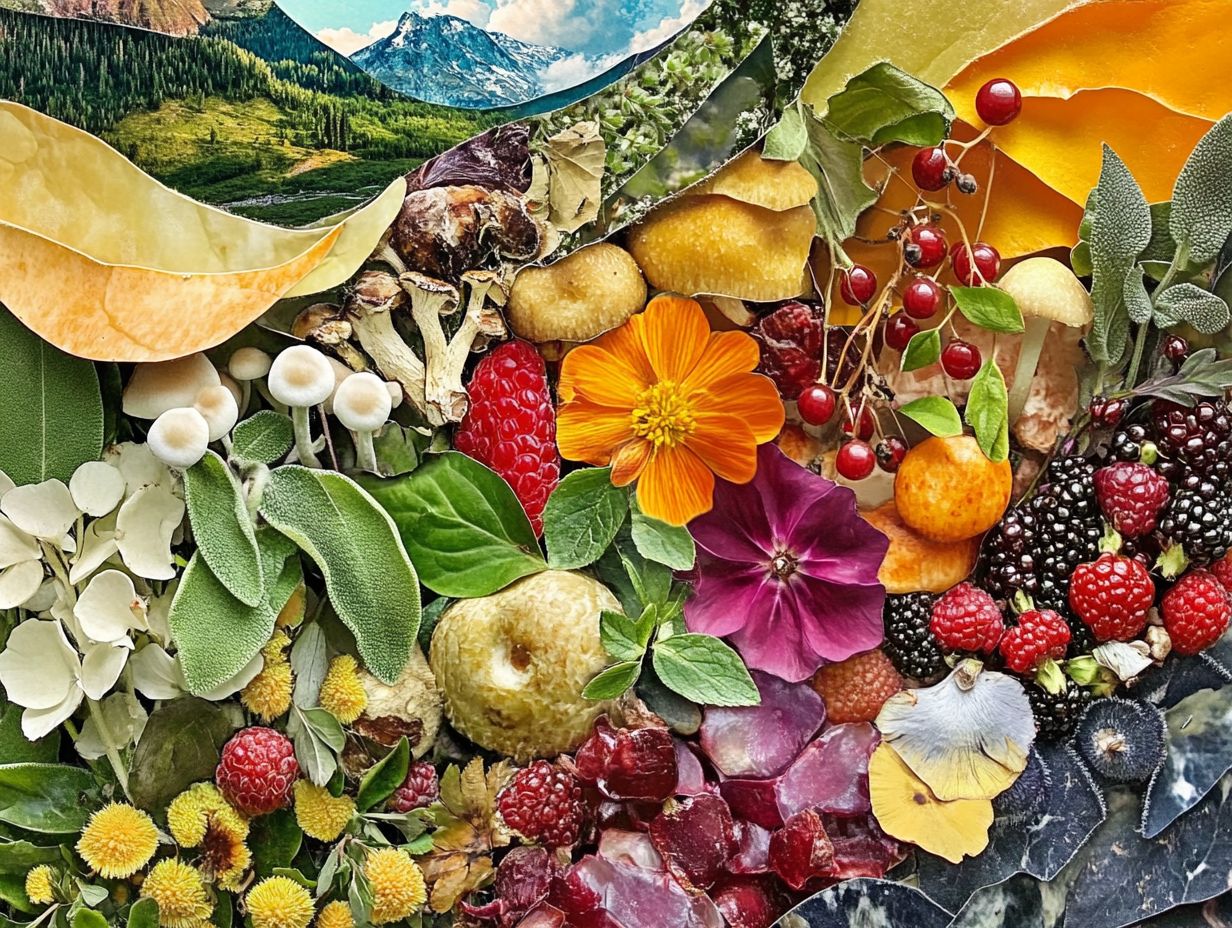
- Incorporating seasonal foraging into your routine can provide a fresh and diverse source of food throughout the year.
- Each season requires different techniques for successful foraging, such as identifying and preserving spring edibles and maximizing summer harvests.
- With the right knowledge and skills, foraging can be a sustainable and rewarding way to connect with nature and support a self-sufficient lifestyle.
What is Seasonal Foraging?
Seasonal foraging is your gateway to gathering wild edible plants and mushrooms at their peak ripeness throughout the year. For more insights, check out this seasonal guide foraging through the year. It deepens your connection with nature while establishing a sustainable harvesting relationship with the environment.
Dive into this enriching activity and elevate your meals! It opens the door to learning about plant identification and the diverse edible offerings that nature has in store for you each season. For a great starting point, check out summer foraging essentials to explore the natural world through the lens of nutrition and sustainability, from the vibrant greens of spring to the rich, earthy flavors of autumn.
By embracing wildcrafting, you can significantly enhance your health through the consumption of rich in nutrients, locally sourced foods that are often free from pesticides and chemicals. Engaging in foraging workshops can further expand your knowledge, equipping you with essential skills for safely identifying edible plants and understanding foraging guidelines.
Picture this: spring brings a bounty of wild garlic and dandelion greens, while summer rewards you with berries bursting with flavor and antioxidants. It’s essential to learn how to identify poisonous plants for your safety and respect local ecosystems. Doing so ensures that these edible treasures remain abundant for generations to come.
Spring Foraging Techniques
Spring foraging techniques invite you to identify and harvest the first wild edible plants that emerge after winter, presenting a delightful bounty of fresh greens and other edible plants that are not only nutritious but also bursting with flavor.
As the earth reawakens, your journey as a forager begins by learning to recognize key species like dandelions, stinging nettles, and wild garlic. Each of these plants brings unique culinary uses and health benefits, beautifully connecting you to the rhythm of the changing seasons.
Ready to discover nature s bounty? Grab your basket and head out today!
Identifying and Harvesting Spring Edibles
Identifying and harvesting spring edibles requires careful attention to the unique characteristics of each plant. To ensure a safe and sustainable foraging experience, it’s important to know what to know about seasonal foraging in your area while enjoying the rich flavors of the season.
Key edibles like Dandelion and Stinging Nettle not only provide a variety of culinary possibilities but also offer a chance to connect with nature by recognizing their distinct features.
By observing visual traits such as leaf shape, color, and flower presence, you can distinguish these plants from their toxic counterparts. For instance, Dandelions have bright yellow flowers and jagged green leaves. Stinging Nettles are known for their serrated leaves and fine hairs that sting upon touch.
Understanding the typical habitats where these edibles thrive whether in disturbed areas, along paths, or in woodlands will further help you identify them.
As culinary trends evolve, foraged ingredients can elevate your meals with bold flavors and essential nutrients, including vitamins and minerals. By practicing responsible harvesting, like taking only what you need and respecting local regulations, you can enjoy the bounty of spring while supporting the ecosystem’s health.
Summer Foraging Techniques
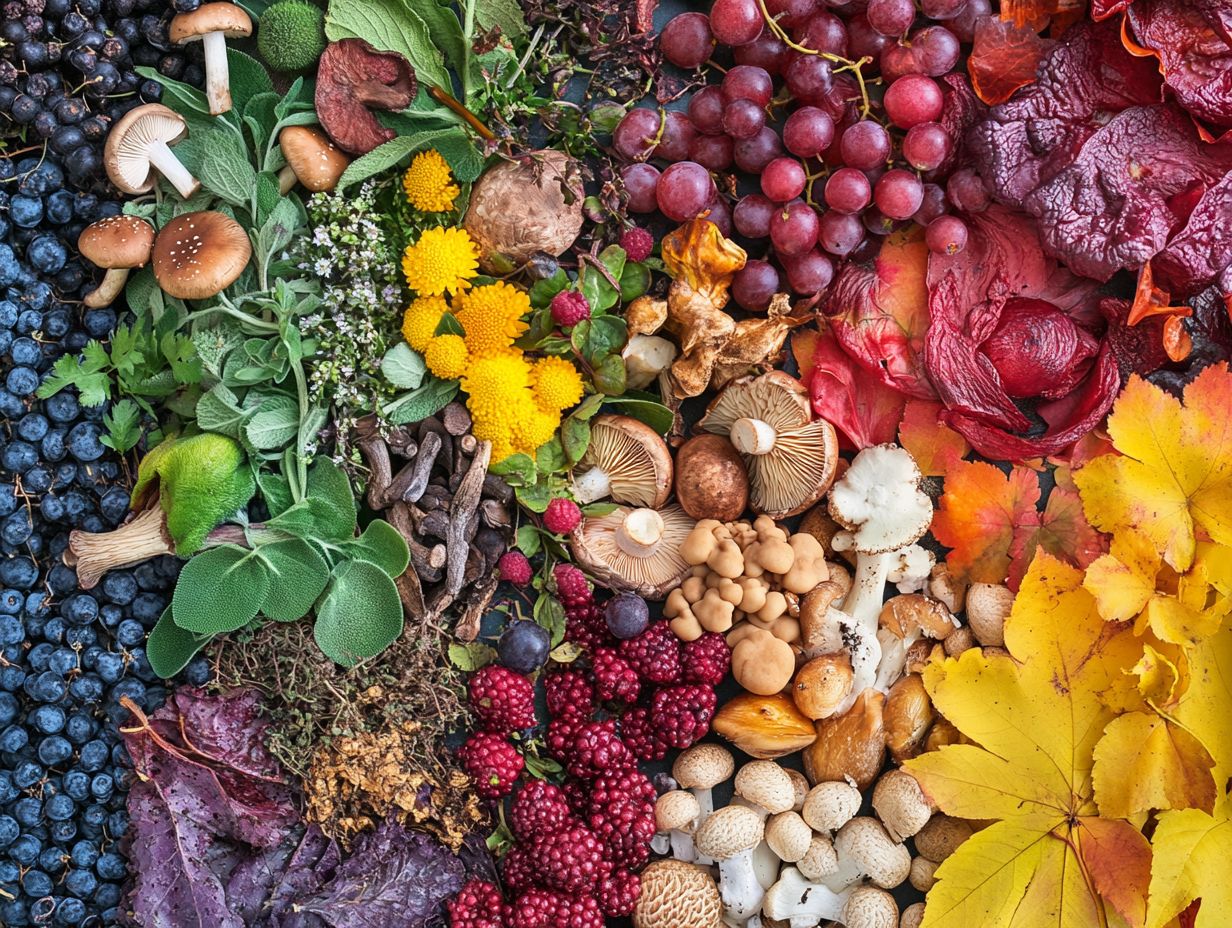
Summer foraging techniques invite you to fully embrace the bounty of wild edibles that flourish during warm months. This season offers a treasure trove of the art of foraging—fruits, herbs, and plants waiting to be gathered!
Delectable treats like succulent berries and aromatic wild herbs enhance your meals and deepen your connection to the natural world around you.
Maximizing Summer Harvests
Maximizing your summer harvests requires strategic planning and a clear understanding of the wild edibles that thrive during this vibrant season. Identifying plants like acorns, blackberries, and Oregon Grape can elevate your foraging experience.
Each plant has its unique preferences. For instance, blackberries thrive in sunny, well-drained areas, while acorns are often found beneath majestic oak trees.
Once you’ve harvested these treasures, proper storage techniques are key. Refrigerate blackberries to keep them fresh and drying acorns and wild mushrooms can extend their shelf life.
Preparing these ingredients thoughtfully can enhance their flavors. Consider roasting acorns to create flour or delicious dishes that add nutty complexity to your meals. Practicing responsible foraging promotes ecological balance and nurtures local biodiversity.
Fall Foraging Techniques
Fall foraging techniques encourage you to enjoy gathering wild edibles as the season shifts. This is a time to harvest a delightful variety of foods, perfect for preserving and enjoying during the colder months ahead. For a deeper dive into this practice, check out the ultimate guide to seasonal foraging techniques.
With nature’s bounty at its peak, it s essential to learn how to identify and safely harvest these plants. You should also familiarize yourself with methods for preserving your foraged treasures to savor their flavors long after the autumn leaves have fallen.
Preserving Fall Forage for Winter
Preserving fall forage for winter involves various techniques that allow you to savor wild edibles long after the harvest season has ended. By employing methods such as drying, freezing, and fermenting, you can maintain the cooking possibilities of herbs, winter mushrooms, and other seasonal delights. For more comprehensive strategies, check out The Ultimate Seasonal Foraging Toolkit. This ensures a sustainable food source throughout the colder months.
Dried herbs make a flavorful addition to stews and soups, providing health benefits and vibrant taste. Frozen wild fruits can easily be blended into smoothies or used in your desserts. Fermentation is a process that helps preserve food and adds beneficial bacteria, enhancing the nutrient profile of foraged vegetables like wild radishes and making them an exceptional complement to any meal.
Harvesting these items at their peak ensures their essence is preserved, allowing seasonal flavors to elevate your winter dishes. Thoughtfully incorporating these preserved treasures into your meals means you can indulge in the taste of autumn’s bounty, even in winter.
Winter Foraging Techniques
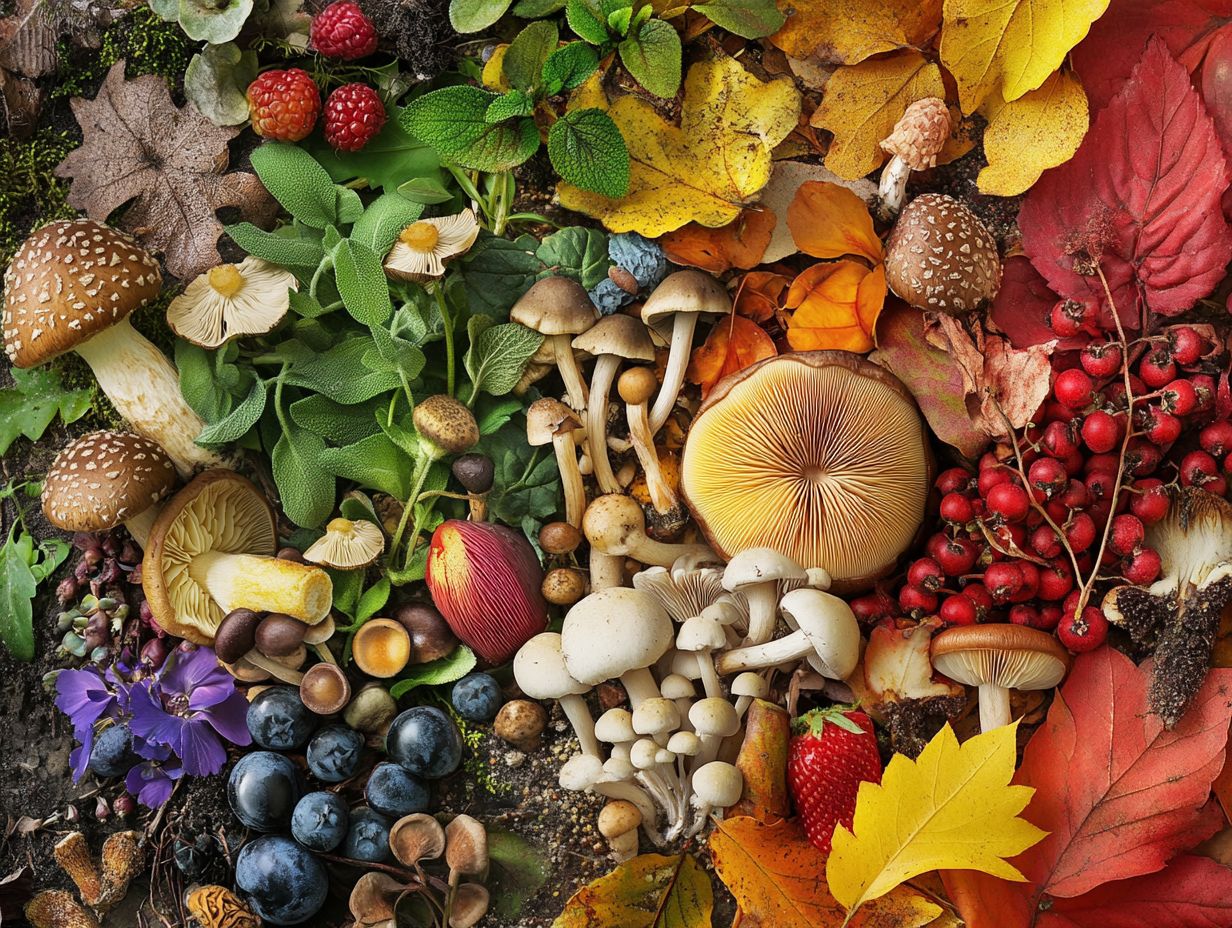
Winter foraging techniques are invaluable for anyone keen on discovering sustenance during the colder months. These skills empower you to identify and gather wild edibles, and learning the art of seasonal foraging can help you find what remains available even when frost sets in.
Embracing this practice allows you to enjoy the nourishment offered by resilient plants like acorns, wild garlic, and rose hips, enhancing both your diet and your connection with nature during this challenging season.
Surviving and Thriving with Winter Forage
Surviving and thriving with winter forage requires understanding the resilient wild edibles that brave harsh conditions, offering vital nutrition during cold months. By mastering the art of identifying these hardy plants, you can safely savor nature’s gifts while elevating your seasonal culinary repertoire.
Winter unveils a unique opportunity to discover a variety of wild edibles. Take pine needles, for example; they re rich in vitamin C and can be transformed into aromatic teas that warm the soul. Then there s chickweed, a tender green that stays fresh, perfect for adding a delightful crunch to your salads.
Foraging safety is paramount; ensure proper identification as some plants can look like safe edibles but are actually harmful, known as toxic look-alikes. Embracing sustainable practices like only harvesting what you truly need and respecting wildlife habitats is essential for preserving these natural resources. This way, you can enjoy the bounty of winter for seasons to come, sharing the richness with fellow adventurers.
Frequently Asked Questions
What is seasonal foraging and why is it important?
Seasonal foraging is the practice of gathering wild plants and other natural resources during specific seasons of the year. It’s important because it allows for proper timing of harvesting when the resources are at their peak, ensuring sustainable practices and optimal nutrition.
What are the best techniques for spring and summer foraging?

During spring, look for new growth and tender greens like dandelion, wild onion, and nettles. Use a sharp knife or scissors to carefully harvest the plants, taking only what you need to leave the rest to continue growing.
In summer, focus on fruits and berries such as blackberries, elderberries, and hazelnuts. Look for plants in sunny, open areas and be cautious of any with thorns or prickly leaves. Always wash and properly identify any plants before consuming.
What are the best techniques for fall foraging and mushroom foraging?
During fall, mushrooms, nuts, and roots are abundant. Common mushrooms to look for include chanterelles, oyster, and shiitake. Nuts like acorns, chestnuts, and hickory nuts can also be collected. Use a basket or mesh bag to gather and ensure proper identification before consuming.
Join us in sharing your favorite foraged recipes below!
What should I keep in mind for winter foraging?
Winter foraging can be exciting! While options are fewer, there are still treasures to discover.
Look for evergreens like pine, cedar, and spruce. Their vitamin C-rich needles make a refreshing tea.
Search for dormant plants too. Burdock and cattail have edible roots that are worth finding.
How can I ensure sustainable foraging practices?
To practice sustainability, follow these basic rules: only take what you need and properly identify plants.
Leave enough for wildlife and future foragers. Always respect private property and get necessary permits if you forage in public areas.

